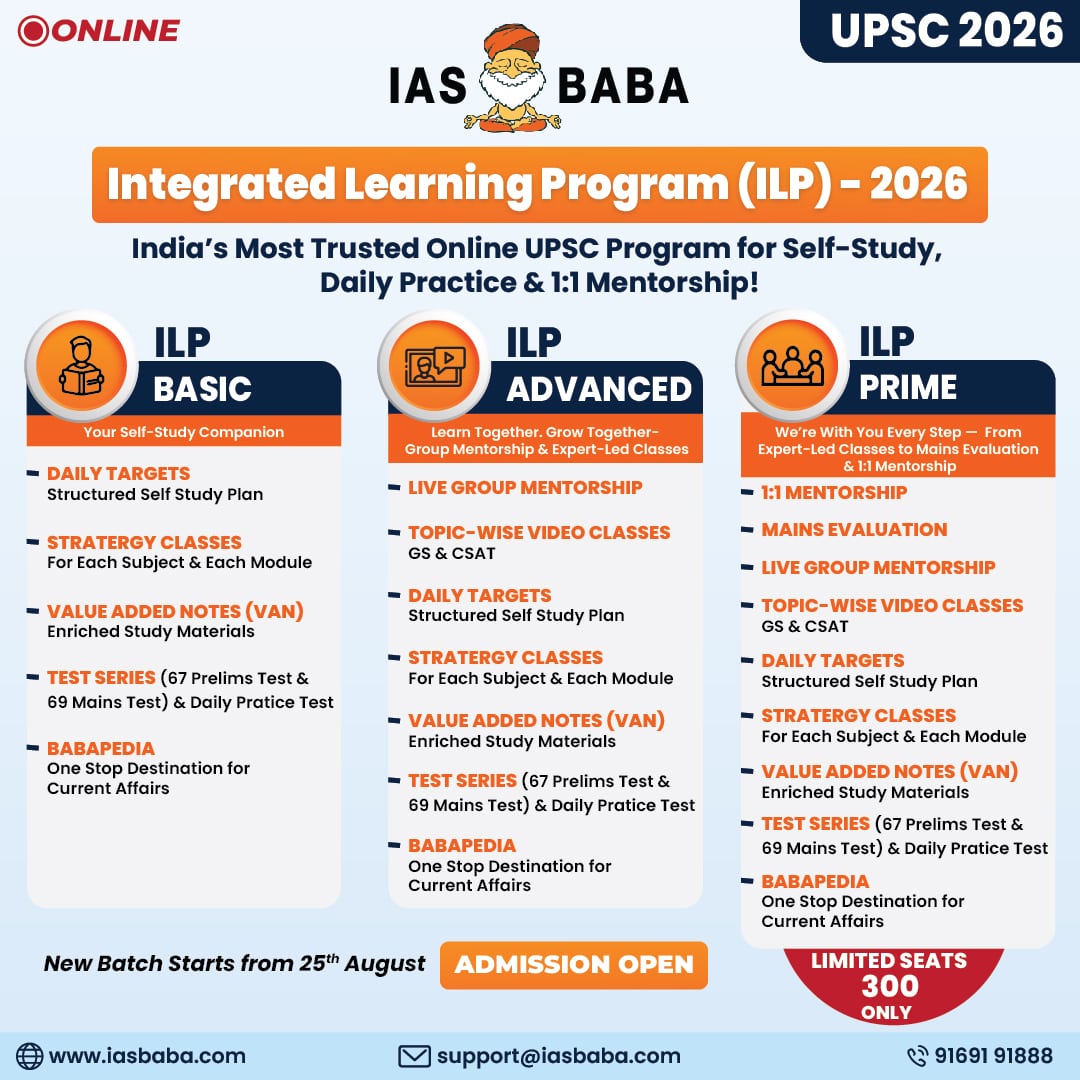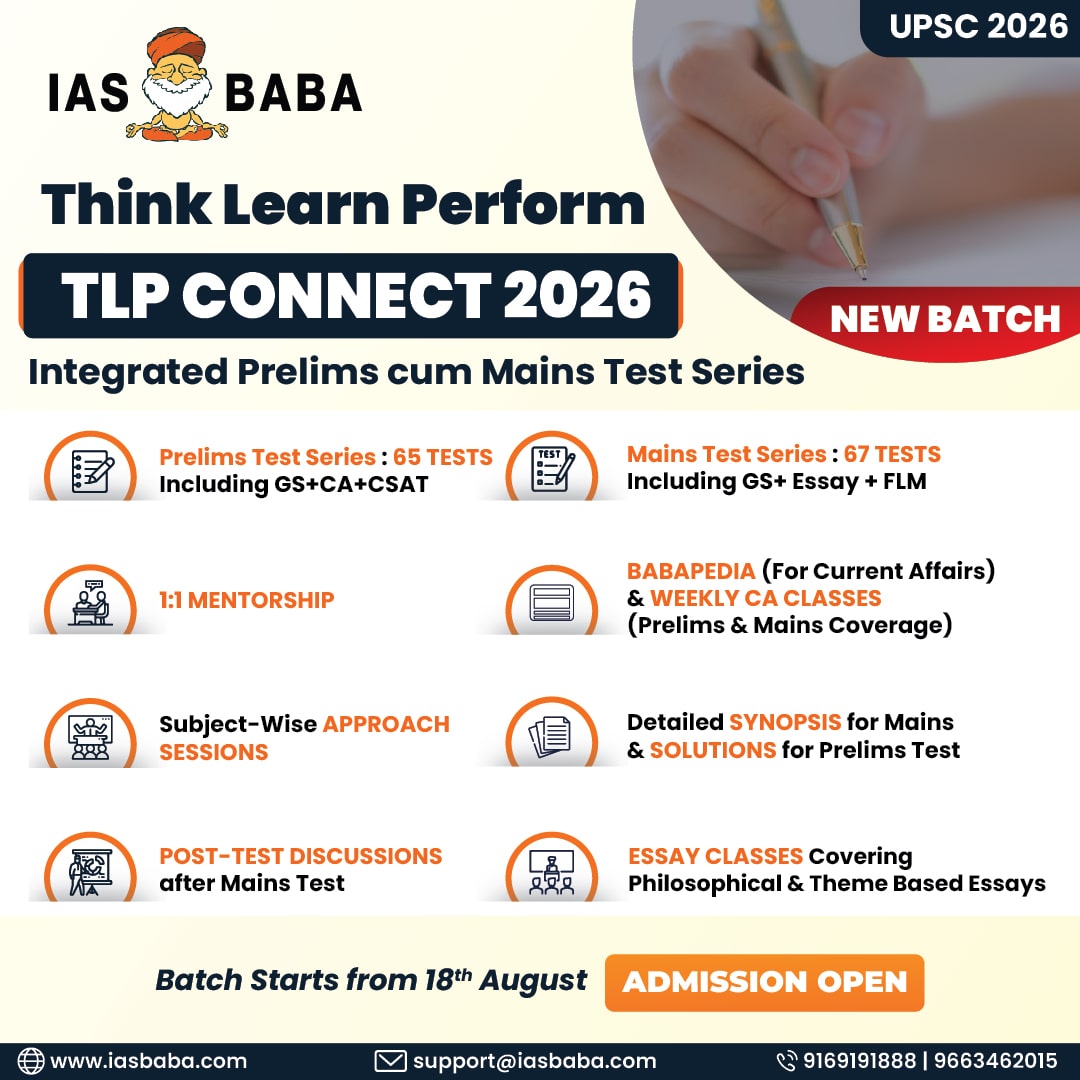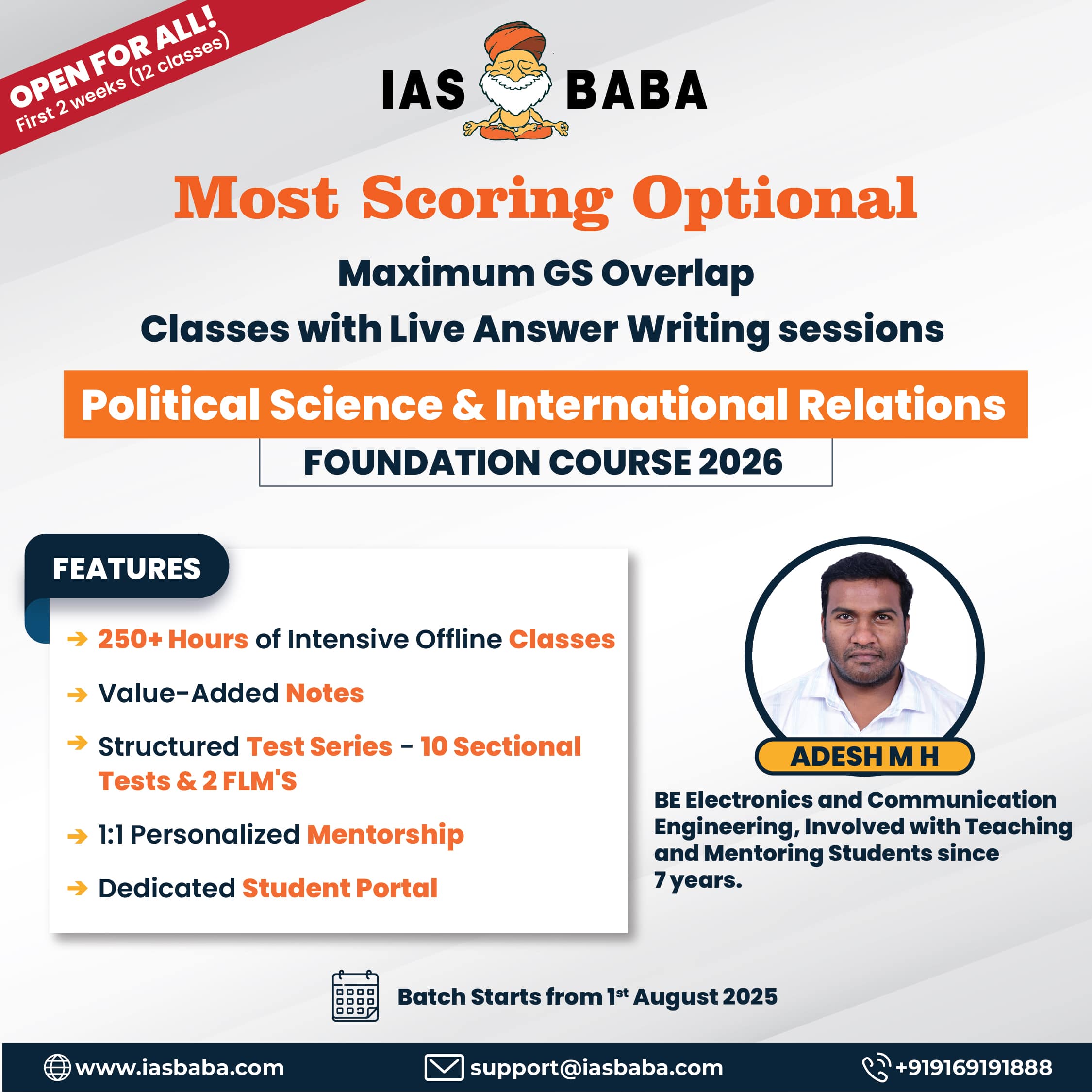IASbaba Daily Prelims Quiz, IASbaba Prelims 60 Days Plan, IASbaba's 60 Days Plan 2016, IASbaba's Daily Prelims Test, IASbaba's Test Series 2016
Click here to get all the Tests– Archives
Hello Friends
Hope you are enjoying Daily questions. The link for Day 45 solution is active now.
Why we asked you to comment?
Now go back to check your answers that you posted with honest effort. Edit your answers with marks. Everyday like this you can self monitor your progress for all 60 days.
Accountability to self is the only way for success
IASbaba ’60 Day Plan’ – Prelims Test 2016 [Day 46]
Q.1) Consider the following about Current Account Deficit.
- A measurement of a country’s trade in which the value of goods and services it imports exceeds the value of goods and services it exports.
- If a current account deficit is financed through borrowing it is said to be more sustainable and is the globally accepted method.
- A factor behind the Asian crisis of 1997 was that countries had run up large current account deficits by attracting capital flows (hot money) to finance the deficit.
- A current account deficit, may imply that you are relying on consumer spending, and are becoming uncompetitive.
Select the correct answer
a) 1 and 2 only
b) 2 and 3 only
c) 1, 3 and 4 only
d) All of the above
Q.2) consider the following about J-curve.
- A theory stating that a country’s trade deficit will worsen initially after the depreciation of its currency because higher prices on foreign imports will be greater than the reduced volume of imports.
- In private equity funds , the J-curve effect occurs when funds experience negative returns for the first several years.
Select the correct answer:
a) 1 only
b) 2 only
c) Both 1 and 2
d) None of the above
Q.3) The balance of payments (BOP) is the method countries use to monitor all international monetary transactions at a specific period of time. Consider the following.
- All trades conducted by both the private and public sectors are accounted for in the BOP in order to determine how much money is going in and out of a country.
- If a country has received money, this is known as a debit, and if a country has paid or given money, the transaction is counted as a credit.
- Theoretically, the BOP should be zero, meaning that assets (credits) and liabilities (debits) should balance, but in practice this is rarely the case.
Select the correct answer
a) 1 and 2 only
b) 1 and 3 only
c) 2 and 3only
d) All of the above
Q.4) Which of following is not under current account of balance of payments (BOP)?
a) Goods
b) Services
c) Loans
d) Transfers
Q.5) Consider the following.
a) India experiences a deficit in income part of current account in BOP.
b) India experiences a surplus in services part of current account in BOP.
c) India experiences a deficit in transfers part of current account in BOP.
d) All the above are correct
Q.6) Which of the following will lead to reduction of CAD?
- Decrease in crude oil consumption.
- Increase in import duty of gold.
- Boost to IT sector in India.
- Promote FDI
Select the correct answer
a) 1, 2 and 3 only
b) 1, 2 and 4 only
c) 1, 3 and 4 only
d) All of the above
Q.7) Consider the following about Arvind Mayaram Committee w.r.t foreign investments.
- Foreign investment of 10 per cent or more in a listed company will now be treated as foreign direct investment (FDI).
- It said an investor may be allowed to invest below 10 per cent and “this can be treated as FDI subject to the condition that the FDI stake is raised to 10 per cent or beyond within one year from the date of the first purchase“.
- The panel has suggested that foreign investment in an unlisted company, irrespective of the threshold limit, may be treated as FPI.
- Any investment by way of equity shares, compulsorily convertible preference shares/debentures less than 10 per cent should treated as Foreign Portfolio Investment (FPI).
Select the correct answer
a) 1 and 3 only
b) 1, 2 and 4 only
c) 2, 3 and 4 only
d) 1, 2 and 3 only
Q.8) Consider the following.
- RBI and Ministry of Finance monitors the FDI investment.
- SEBI is the regulator for FPI, FII or RFPI investments.
Select the correct answer:
a) 1 only
b) 2 only
c) Both 1 and 2
d) None of the above
Q.9) Consider the following.
- If BOP is positive then it might lead to rupee appreciation and hence good for the exporters.
- If BOP is negative then it might lead to rupee depreciation and hence the RBI will absorb the excess rupee in the market.
Select the correct answer:
a) 1 only
b) 2 only
c) Both 1 and 2
d) None of the above
Q.10) Consider the following about nominal and real exchange rate.
- Nominal exchange rate is the price of one currency in terms of number of units of some other currency.
- It is ‘nominal’ because it measures only the numerical exchange value, and does not say anything about other aspects such as the purchasing power of that currency.
- The real exchange rates are nothing but the nominal exchange rates multiplied by the price indices of the two countries.
- The real exchange rates are nothing but the nominal exchange rates multiplied by the price indices of the two countries.
Select the correct answer
a) 1, 2 and 3 only
b) 1, 2 and 4 only
c) 1, 3 and 4 only
d) All of the above
Q.11) Consider the following statements regarding the Exchange Rate Systems:
- Under a freely floating exchange rate regime, authorities do not intervene in the market for foreign exchange and there is minimal need for international reserves.
- RBI does not intervene in Foreign Exchange market, with the objective of maintaining the Real Effective Exchange Rate stable.
Which of the above statements are correct?
a) 1 only
b) 2 only
c) Both 1 and 2
d) Neither 1 nor 2
Q.12) Consider the following statements:
The price of any currency in international market is decided by the
- World Bank
- Demand for goods/services provided by the country concerned
- Stability of the government of the concerned country
- Economic potential of the country in question
Which of the statements given above are correct?
a) All of the above
b) 1 and 4
c) 2 and 3
d) 3 and 4
Q.13) The value of the SDR is currently based on a basket of four major currencies: the U.S. dollar, euro, the Japanese yen, and pound sterling. The basket is being expanded to include which of the following currencies?
a) Indian Rupee
b) Swiss Franc
c) Saudi Riyal
d) Chinese Renminbi
Q.14) If the foreign-currency equivalent of the home currency falls, then
- the home currency has devalued.
- the home currency has revalued.
- the currency must be in a freely fluctuating exchange-rate system.
- the currency is less valuable in purchasing power parity.
Which of the above statements are incorrect?
a) 1 only
b) 2 only
c) 3 and 4
d) 2,3 and 4
Q.15) Which of the following are the functions of IMF?
- provide emergency loans to countries facing balance of payments problems.
- monitor macroeconomic developments continuously in member countries.
- serve as the world central bank.
- to provide a line of credit for each member country.
Select the code from following :
a) 1 and 2
b) 2 and 3
c) 1,2 and 4
d) All of the above
Q.16) An annual ‘Pitra-paksha’ mela takes place here—
a) Bodhgaya
b) Varanasi
c) Puri
d) Gaya
Q.17) The Udayagiri-Khandagiri caves are a part of the heritage of which faith?
a) Hinduism
b) Buddhism
c) Jainism
d) Sati Cult
Q.18) The assigned code name of India’s first nuclear bomb explosion in 1974 is:
a) Operation Blue Star
b) Operation Shakti
c) Smiling Buddha
d) Operation Crossroads
Q.19) Consider the following statements:
- He was also known as Bacha Khan.
- He founded the Khudai Khidmatgar (“Servants of God”) movement in 1929.
- He strongly opposed the All-India Muslim League’s demand for the partition of India.
Identify the personality from the following options:
a) Badruddin Tyabji
b) Khan Abdul Gaffar Khan
c) Hakim Ajmal Khan
d) Maulana Abul Kalam Azad
Q.20) Where did the Counter-Terrorism Conference-2016 take place?
a) New Delhi
b) Jaipur
c) Mumbai
d) Ahmedabad
Q.21) Consider the following statements with regard to Central Statistics Office (CSO) under Ministry of Statistics and Programme Implementation:
- The CSO releases Consumer Price Indices (CPI) for all-India and states/union territories separately for rural, urban, industrial workers and combined (rural plus urban)
- CSO also disseminates Energy Statistics, Social and Environment Statistics and prepares the National Industrial Classification
Which of the statements given above is/are correct?
a) 1 only
b) 2 only
c) Both 1 and 2
d) Neither 1 nor 2
Q.22) Which among the following statements is/are correct in regard to the Cash based Accounting System and Accrual Accounting System?
- The Indian Government accounts are prepared on a cash based accounting system, which does not give a realistic account of government’s financial position.
- The present system does not reflect accrued liabilities arising from the gap between communities and transactions of government on the one hand and payments made.
- The 12th Finance Commission recommended for the introduction of accrual accounting in Government, which have been accepted in principle.
Select the correct one/ones, using the code given below:
a) 1 and 2
b) 2 and 3
c) 1 and 3
d) 1, 2 and 3
Q.23) Select the incorrect one/ones about the Most Favoured Nation (MFN) provisions of the WTO from the given list of statements, using the code given below:
- In general, MFN means that every time a country lowers a trade barrier or opens up a market, it has to do so for the same goods or services for all its trading partners
- The MFN clause functions differently for the developed and developing countries
Select the appropriate code
a) 1 only
b) 2 only
c) Both 1 and 2
d) Neither 1 nor 2
Q.24) Consider the following statements in regard to the concept known as Labour force participation rate in India:
- The Labour Force Participation Rate (LFPR), obtained by dividing the number of persons in the labour force by total population, is an important parameter in employment projections and formulation of employment strategies.
- The National Sample Survey Organisation (NSSO) defines labour force participation rate (LFPR) as the number of persons/person days in labour force per thousand persons/person days.
Select the correct answer using the code given below
a) Only 1
b) Only 2
c) 1 and 2
d) Neither 1 nor 2
Q.25) Consider the following statements in regard to agricultural schemes in India:
- National Food Security Mission (NFSM) to increase the production of rice, wheat and pulses by 10,8 and 2 million tonnes, respectively by the end of the 12th Plan.
- The Government of India has approved crop development programme on cotton, jute and sugarcane for enhancing productivity under National Food Security Mission-Commercial Crops (NFSM-CC) from 2014-15.
- Krishonnati Yojana is a new umbrella scheme and the above two schemes have been included in Krishonnati scheme.
Which of the statements given above is/are correct?
a) 2 and 3 only
b) 1 and 2 only
c) 1 and 3 only
d) All of the above
Download the Solution- Click here
P.S- Attempt these questions within 20 minutes with full honesty and write your results in the comment box. Next day, come back and check your result. You can also discuss the important concepts and issues, in case of doubts (among peers)
All the best
IASbaba














